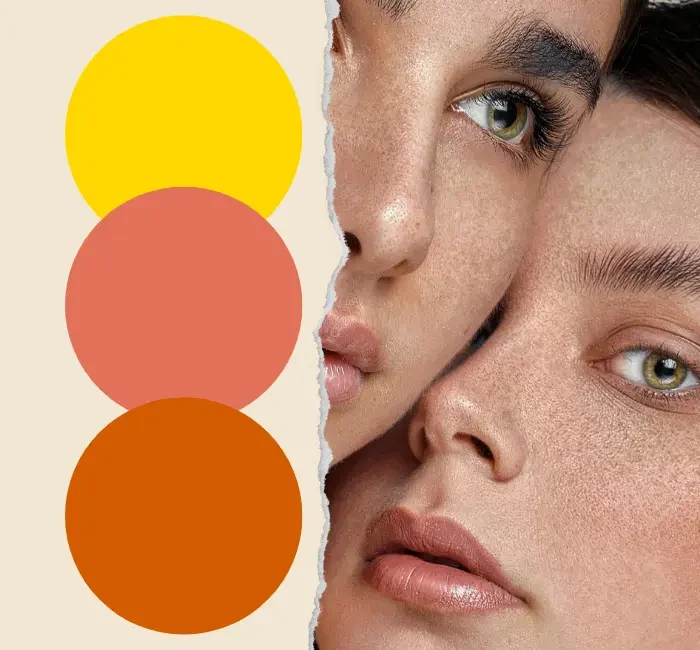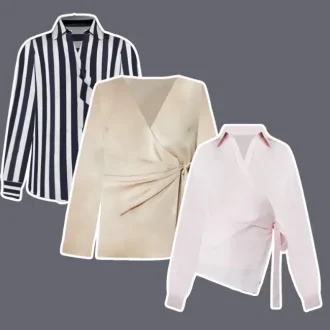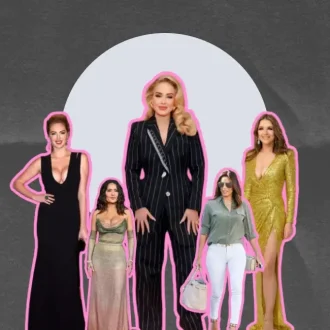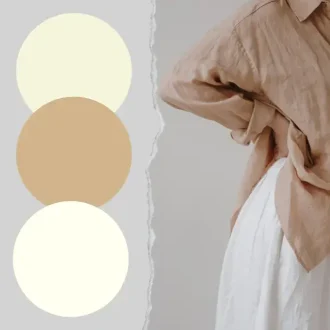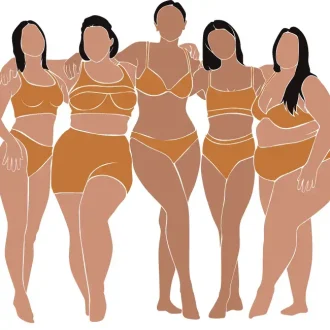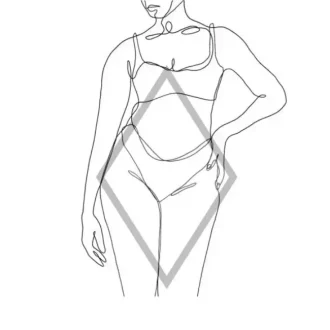Ever wonder why some colors make you look radiant while others leave you looking washed out?
The secret lies in understanding how to find your skin undertone. Knowing your skin’s undertones can transform your fashion and beauty game, making it easier to choose clothing, makeup, and accessories that enhance your natural glow.
In this guide, we’ll explore everything you need to know about warm undertones, from identifying them to building a wardrobe and beauty routine that highlights your best features.
Understanding Warm Colors
Warm undertones deserve warm colors that can complement and enhance the natural warmth of your skin. Knowing how to navigate the color wheel and understanding the variations within warm hues can make all the difference in your fashion and beauty choices.
Color Wheel Basics
The color wheel is a fundamental tool in understanding how colors interact and complement each other. It’s divided into primary, secondary, and tertiary colors.
- Primary Colors: Red, blue, and yellow are the primary colors, from which all other colors are derived.
- Secondary Colors: These are created by mixing two primary colors. For example, red and yellow make orange, blue and yellow make green, and red and blue make purple.
- Tertiary Colors: These are a mix of primary and secondary colors, resulting in hues like red-orange, yellow-green, and blue-purple.
Warm Colors on the Color Wheel: Red, Orange, Yellow, Warm Greens
Warm colors are found on one side of the color wheel and include red, orange, yellow, and warm greens. These colors are reminiscent of warmth and sunlight, making them perfect for enhancing warm undertones. They can make your skin look more vibrant and alive, bringing out the natural golden or peachy hues in your complexion.
Warm Color Variations
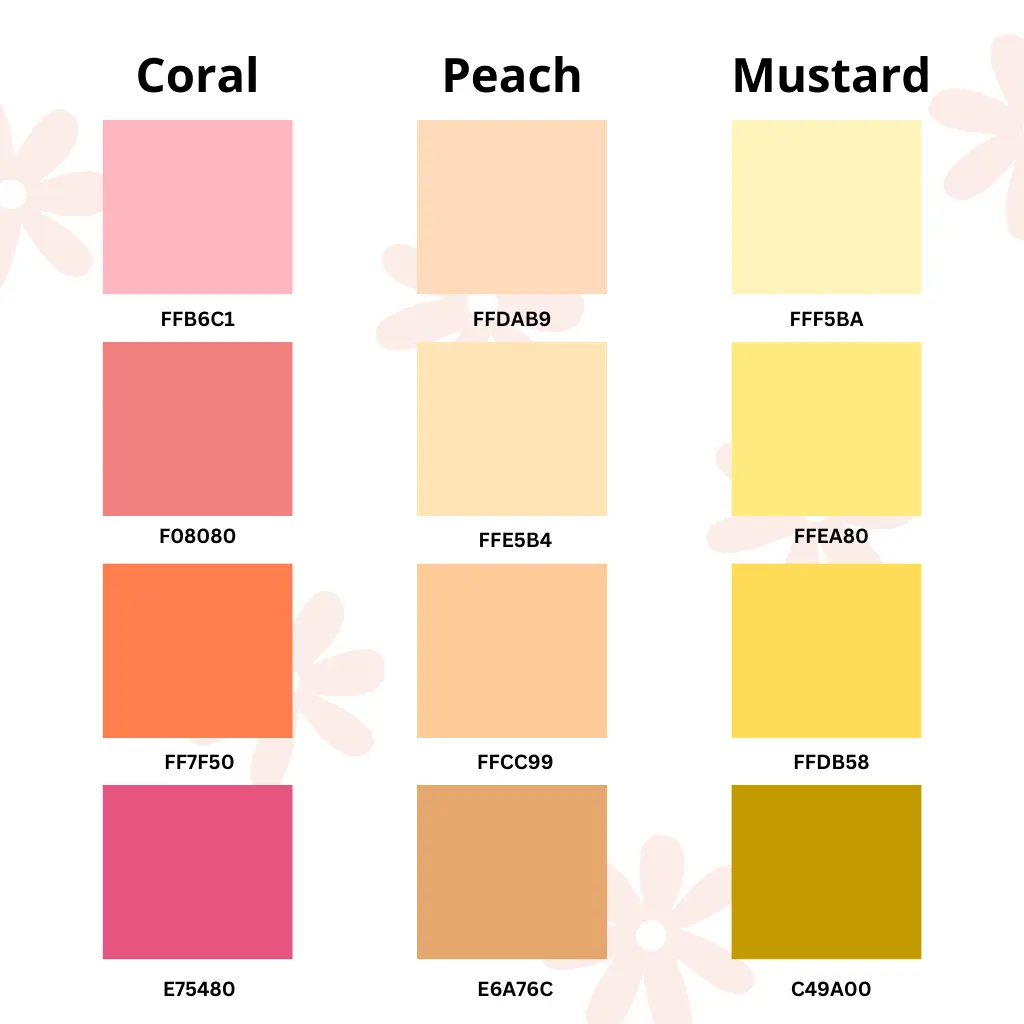
Within the spectrum of warm colors, there are countless variations. Here are a few key ones to consider:
- Coral: A mix of pink and orange, coral is a versatile warm color that flatters many skin tones.
- Peach: Soft and subtle, peach combines orange and yellow, creating a delicate hue that adds a gentle warmth.
- Mustard: A deeper, more intense version of yellow, mustard adds richness and depth to your palette.
How Intensity and Saturation Affect Perception
The intensity and saturation of a color can dramatically change how it looks and how it interacts with your undertones.
- Intensity: This refers to the brightness or dullness of a color. High-intensity colors are vibrant and bold, perfect for making a statement. Lower intensity colors are more subdued and can be used to create a softer, more sophisticated look.
- Saturation: This describes the purity of a color. A highly saturated color is vivid and pure, while a less saturated color has been mixed with gray, resulting in a more muted tone.
For example, a bright coral dress will have a very different effect compared to a muted peach blouse. Both are warm colors, but the intensity and saturation levels change how they enhance your natural undertones. Experimenting with different variations can help you find the perfect shades that make you look your best.
What are Warm Undertones?
Warm undertones have a yellow, peachy, or golden hue. People with warm undertones often have greenish veins, look better in gold jewelry, and tan easily. It’s a common misconception that fair skin can’t have warm undertones or that dark skin always does. In reality, warm undertones can be found across all skin tones, giving a sun-kissed, vibrant appearance.
Identifying Warm Undertones
Knowing your undertone is the first step to selecting the right makeup, clothing, and accessories. Here are some simple yet effective methods to identify if you have warm undertones.
Vein Test
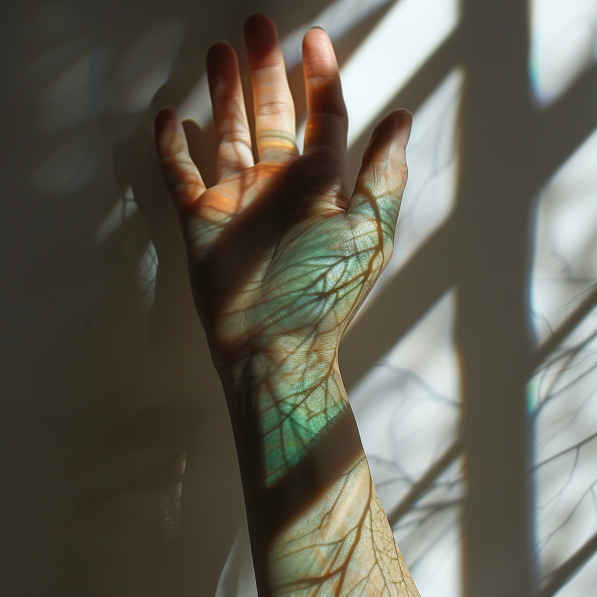
One of the easiest ways to determine your skin’s undertone is the vein test. It’s quick, straightforward, and can be done at home.
Explanation of the Vein Test
To perform this test, find a spot with natural light and examine the veins on the inside of your wrist. The color of your veins can give you a clue about your undertones.
How Greenish Veins Indicate Warm Undertones
If your veins appear greenish, you likely have warm undertones. This green hue is due to the mix of your skin’s yellow pigmentation with the blue of your veins, resulting in a greenish appearance.
Jewelry Test
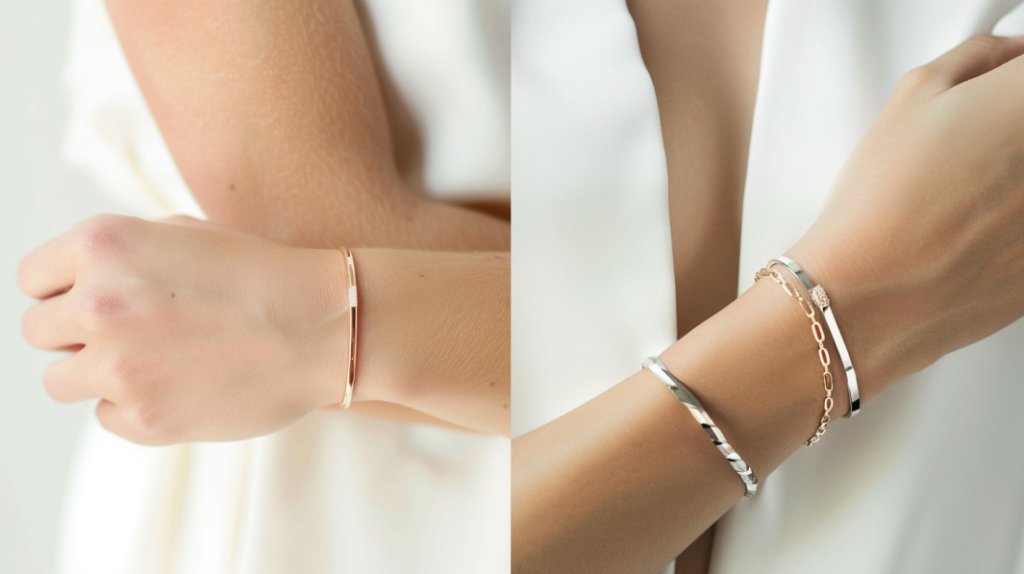
Another fun and practical way to identify your undertone is through the jewelry test.
How Gold Jewelry Complements Warm Undertones
Warm undertones have a natural affinity for gold jewelry. The yellow tones in gold enhance the golden or peachy hues in your skin, making you look radiant and vibrant.
Differences in Appearance with Gold vs. Silver
Try this experiment: wear a piece of gold jewelry on one wrist and a piece of silver jewelry on the other. Notice which metal makes your skin look more vibrant. If gold jewelry enhances your complexion more than silver, it’s a sign of warm undertones. Silver might not complement your skin as well, potentially making it look duller by comparison.
White T-shirt Test
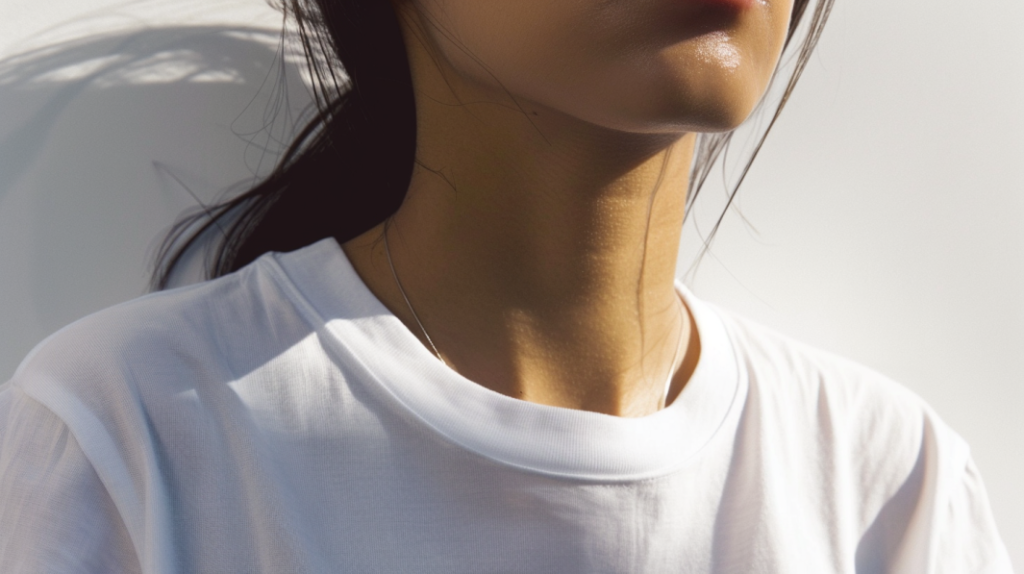
The white T-shirt test is another simple method to determine your undertone.
How Skin Appears Against a White Backdrop
Wear a pure white T-shirt and stand in front of a mirror in natural light. The white fabric serves as a neutral background, highlighting your skin’s natural tones.
Signs of Yellow or Golden Undertones
If your face looks more yellow or golden against the white T-shirt, you have warm undertones. The stark whiteness of the shirt amplifies the warm hues in your skin, making them more noticeable.
Sun Exposure Test
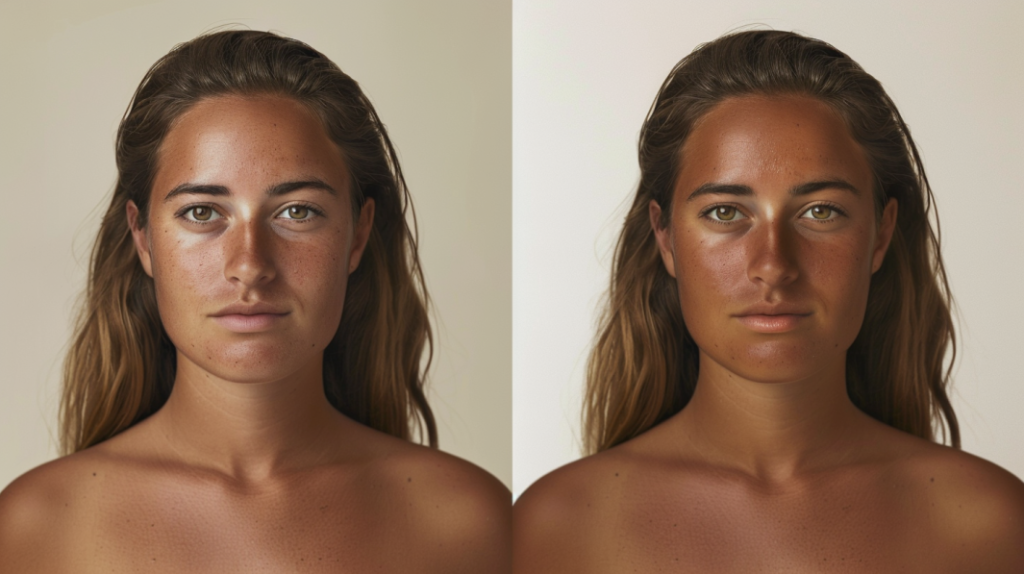
Consider how your skin reacts to sun exposure as another indicator of your undertone.
How Your Skin Reacts to Sunlight
Think about what happens when you spend time in the sun. Does your skin tan easily, or does it burn quickly? This reaction can provide insights into your undertone.
Tanning vs. Burning as Indicators
People with warm undertones usually tan more easily and develop a golden or bronze glow. If you find that you rarely burn and instead get a nice, even tan, it’s likely that your skin has warm undertones. Conversely, if you burn more often than you tan, you might have cool undertones.
Building a Wardrobe with Warm Undertones
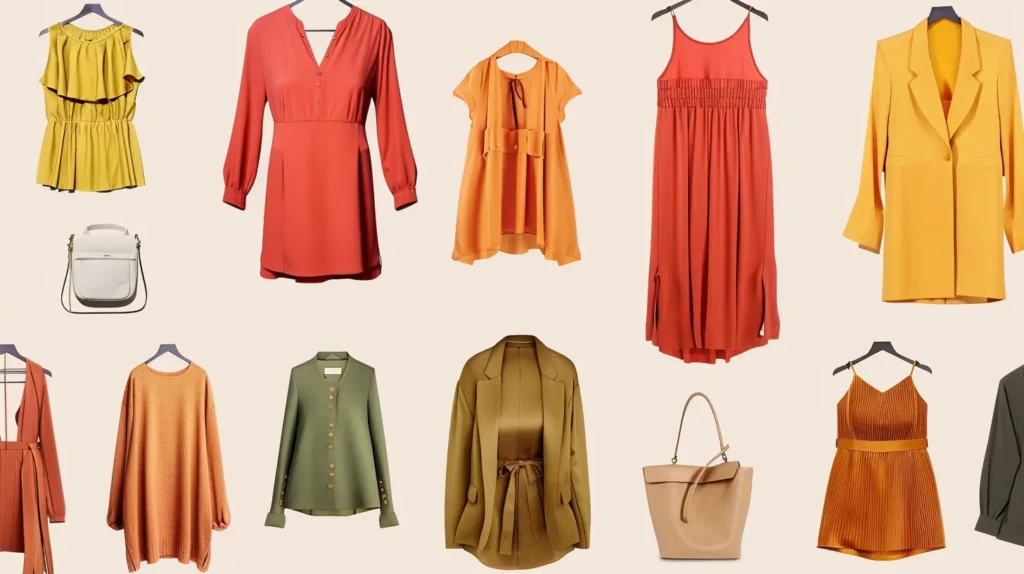
Understanding your skin’s undertones is key to creating a wardrobe that enhances your natural beauty. For those with warm undertones, selecting the right colors can make your complexion glow. Here’s how to build a wardrobe that complements your warm undertones perfectly.
Best Clothing Colors for Warm Undertones
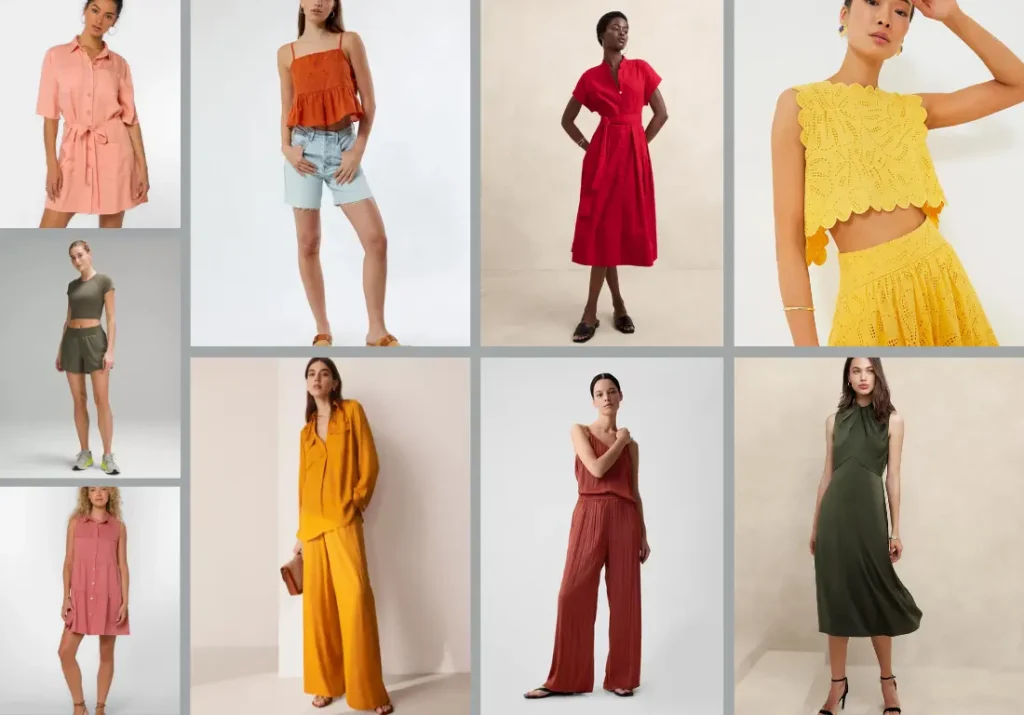
Warm undertones look best in colors that reflect the natural warmth of their skin. Think of hues that evoke images of autumn leaves, sunsets, and golden fields. Here are some of the best clothing colors for warm undertones:
- Coral: This vibrant mix of pink and orange brightens the complexion.
- Golden Yellow: Reflects the natural golden hues in your skin.
- Burnt Orange: Adds a rich, earthy tone.
- Warm Reds: Shades like tomato red complement warm undertones beautifully.
- Olive Green: A versatile color that works well for casual and formal attire.
- Mustard: A deeper, more intense yellow that enhances the warm undertones.
Examples of Outfits and Combinations
- Casual Look: Pair a mustard top with olive green trousers and accessorize with gold jewelry for a chic, everyday look.
- Office Attire: Opt for a coral blouse with a neutral beige skirt and burnt orange heels to stand out in the boardroom.
- Evening Wear: Choose a warm red dress and complement it with gold accessories and a bronze clutch for a stunning evening ensemble.
Neutral Colors for Warm Undertones
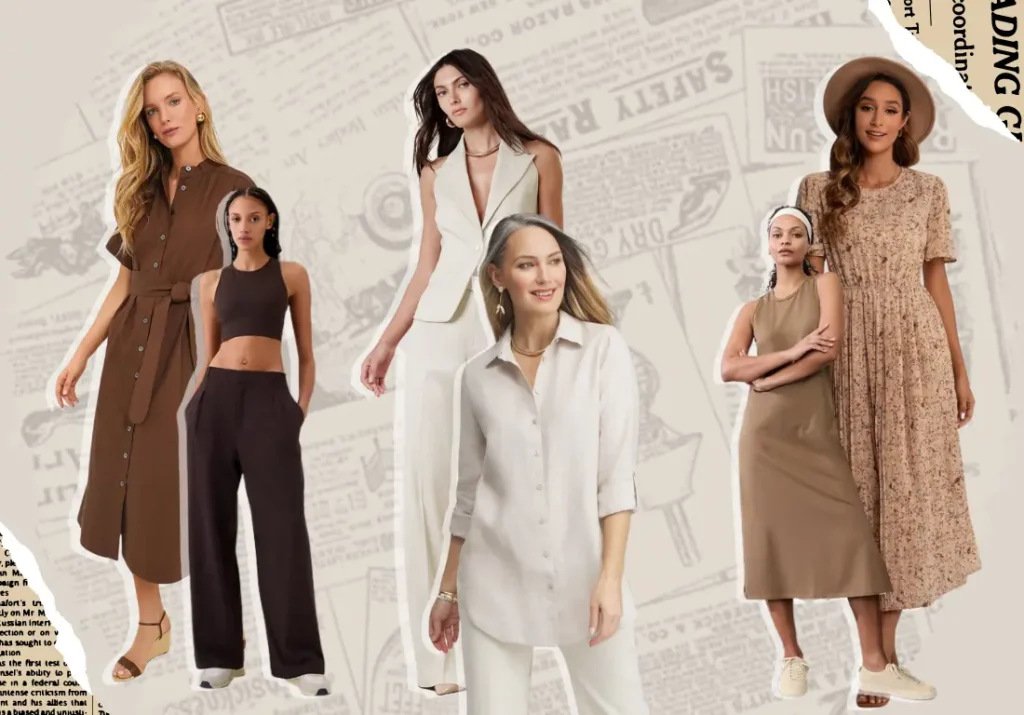
Neutrals are essential in any wardrobe, providing a versatile base that can be dressed up or down. For warm undertones, the best neutrals include:
- Beige: A light, creamy color that works well as a base for any outfit.
- Warm Browns: Shades like caramel and chocolate add depth without overpowering.
- Ivory: Softer than stark white, ivory complements the natural warmth of your skin.
Using Neutrals to Balance Vibrant Warm Colors
Incorporating neutrals can help balance out the vibrant warm colors in your wardrobe. Here’s how:
- Layering: Use neutral tones to layer your outfits. For instance, pair a burnt orange blouse with a beige cardigan.
- Accessories: Neutral accessories, such as an ivory scarf or caramel handbag, can tone down a bold outfit while maintaining style.
- Mix and Match: Combine neutral pieces with your warm-colored clothing for a balanced, sophisticated look. For example, a coral top with warm brown trousers can create a polished yet vibrant outfit.
Practical Examples and Tips
- Accessorize with Neutrals: Use beige or ivory accessories to highlight your warm-colored clothing without overwhelming your look.
- Statement Pieces: Choose one vibrant color as your statement piece (like a mustard skirt) and balance it with neutral items (like an ivory blouse and beige shoes).
- Seasonal Adjustments: In cooler months, opt for warm browns and deeper tones. In warmer months, light neutrals like beige and ivory can keep your look fresh and airy.
Makeup for Warm Undertones
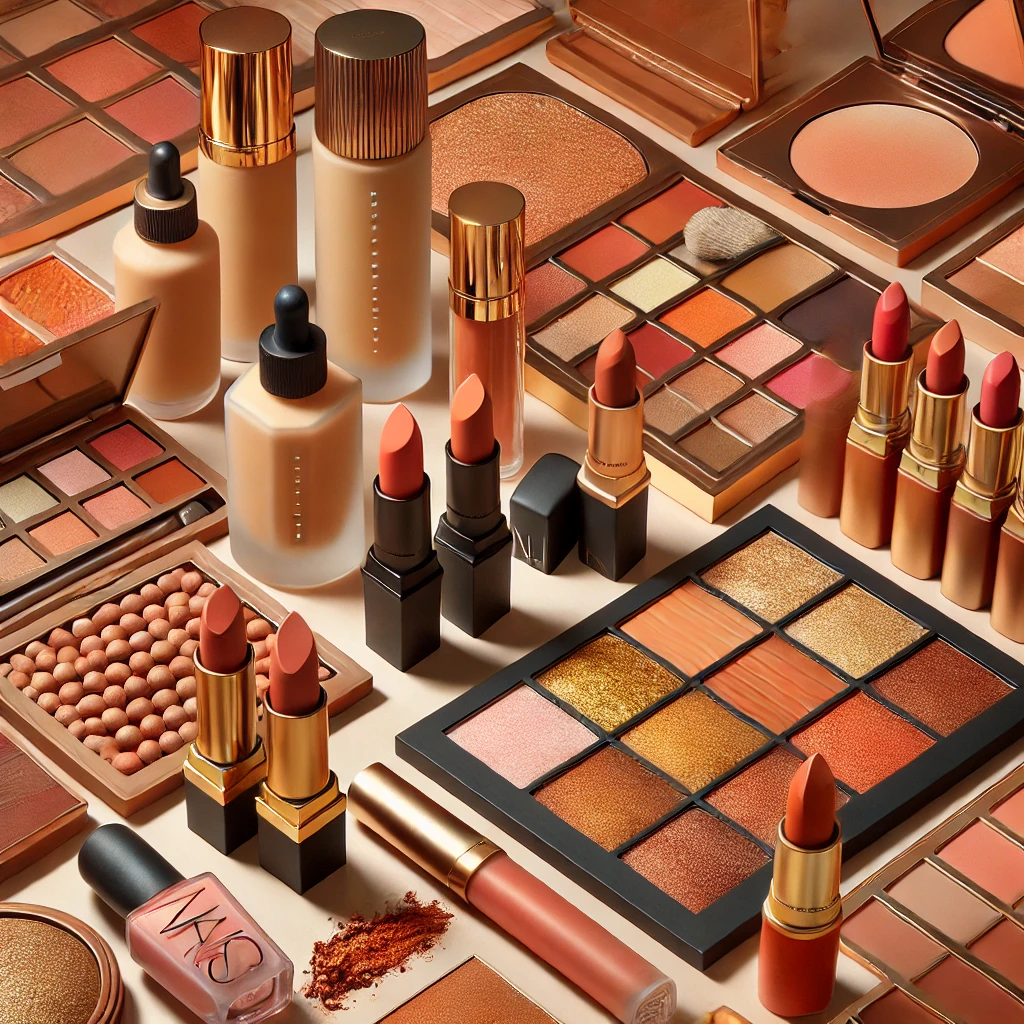
Finding the perfect makeup to enhance your warm undertones can transform your look. Here’s a detailed guide to help you select the best products and techniques.
1. Foundation Selection
Selecting the right foundation is crucial for a flawless look. For warm undertones, opt for foundations with golden, yellow, or peachy undertones. These shades blend seamlessly with your natural skin color, avoiding the ashy or too-orange look that can result from mismatched tones.
Brands that Offer Good Options for Warm Undertones
Many brands cater to a variety of undertones. Here are some top picks:
- Fenty Beauty: Known for its extensive shade range, Fenty offers several options for warm undertones, ensuring a perfect match.
- NARS: The Radiant Longwear Foundation comes in multiple shades with warm undertones.
- MAC Cosmetics: Their Studio Fix Fluid and Face and Body ranges have numerous shades tailored for warm undertones.
2. Blush and Bronzer
Blush and bronzer can add depth and warmth to your complexion. For warm undertones, consider the following shades:
- Blush: Peach, coral, and warm pinks complement warm undertones beautifully. Try NARS Orgasm or MAC Peaches.
- Bronzer: Choose bronzers with golden or bronze hues. Avoid ashy tones that can clash with your skin’s warmth. Hoola Bronzer by Benefit and Laguna by NARS are excellent choices.
Application Tips to Enhance Warm Undertones
- Blush: Apply blush to the apples of your cheeks and blend upwards towards your temples. This technique enhances your natural warmth and gives a healthy glow.
- Bronzer: Apply bronzer to the hollows of your cheeks, along your hairline, and on your jawline. Blend well to create a natural, sun-kissed look.
3. Eye Makeup
The right eyeshadow colors can make your eyes pop and enhance your overall look. For warm undertones, consider these shades:
- Gold and Bronze: These colors enhance the natural warmth of your skin.
- Warm Browns and Terracotta: Perfect for a neutral look that complements your undertones.
- Olive and Copper: Add a unique touch while still harmonizing with your warm skin.
Techniques for Warm Undertone-Friendly Eye Makeup
- Base Color: Start with a neutral base color to even out your eyelid.
- Crease Color: Use a warm brown or terracotta shade in the crease to add depth.
- Lid Color: Apply a shimmer or metallic gold/bronze shade to the lid for a pop of color.
- Highlight: Use a champagne or light gold color on the brow bone and inner corners of your eyes.
4. Lip Colors
Choosing the right lipstick can pull your whole look together. Here are some top shades for warm undertones:
- Nudes: Opt for peachy nudes or warm beige tones.
- Corals and Peaches: These shades bring out the best in warm undertones.
- Warm Reds: Look for reds with orange or brick undertones rather than blue-based reds.
Day vs. Night Lipstick Options
- Daytime: For a subtle, everyday look, choose a nude or light peach lipstick. Products like Charlotte Tilbury’s Pillow Talk in the warm-toned variant are ideal.
- Nighttime: For evening events, go bold with a warm red or deep coral. Try MAC’s Chili or Tom Ford’s Flame for a statement look.
Accessories and Hair Color
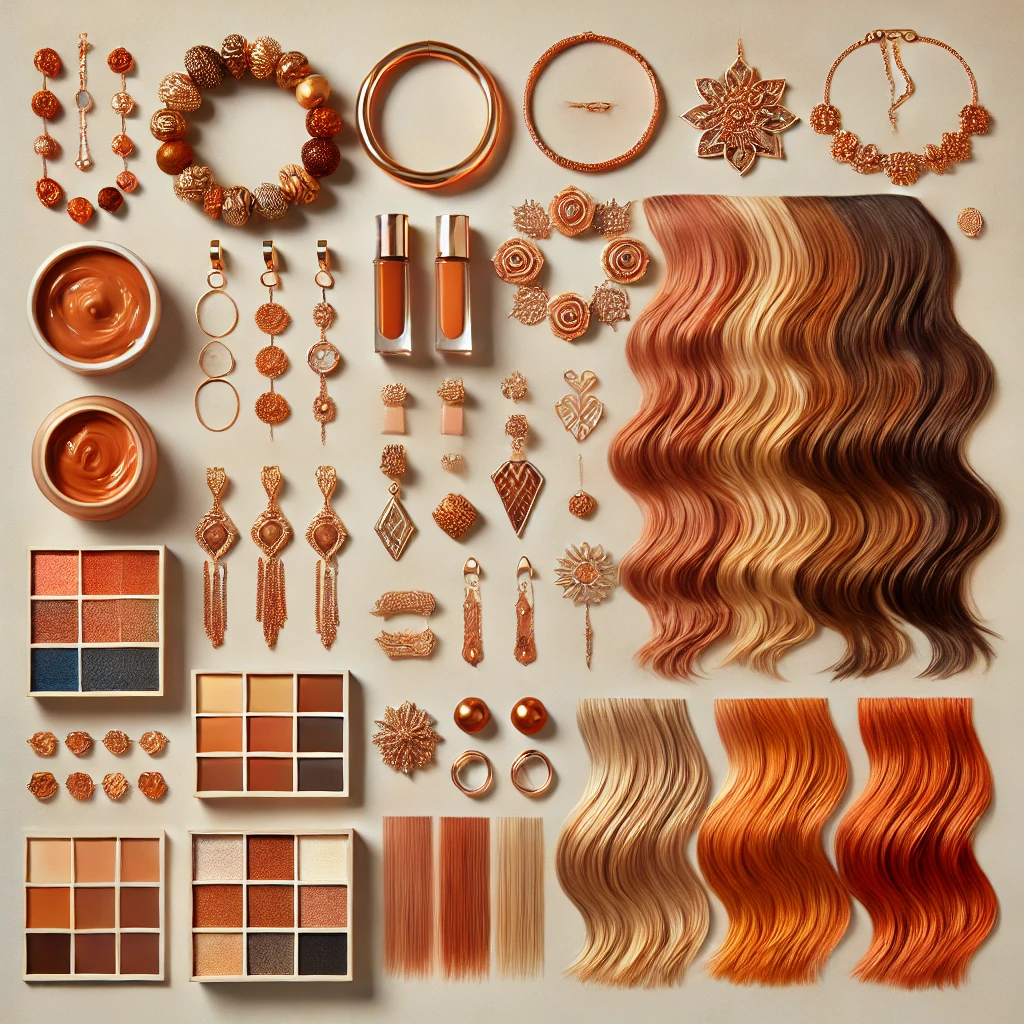
Accessories and hair color can significantly impact your overall look, especially when you have warm undertones. Here’s how to choose the best options to enhance your natural warmth.
Jewelry
Jewelry is a fantastic way to highlight your warm undertones. The right metals and styles can make your skin glow and your outfits pop.
Best Metals and Styles for Warm Undertones
Warm undertones shine brightest with metals that have a warm hue. Gold, copper, and rose gold are excellent choices as they complement the golden or peachy hues in your skin.
- Gold: The classic choice for warm undertones. It’s timeless and adds a luxurious touch to any outfit.
- Copper: Offers a rich, earthy look that enhances the warmth of your skin.
- Rose Gold: Combines the best of gold and copper, providing a soft, romantic glow.
Examples of Gold, Copper, and Rose Gold Accessories
- Gold Earrings: Simple gold hoops or intricate gold chandeliers can elevate your look.
- Copper Bracelets: A statement copper cuff or a delicate copper chain bracelet can add an earthy elegance.
- Rose Gold Necklaces: A rose gold pendant or a layered rose gold necklace can bring a touch of romance to your style.
Hair Colors
Choosing the right hair color is crucial for complementing your warm undertones. The goal is to enhance your natural beauty by selecting shades that harmonize with your skin tone.
Hair Dye Options That Complement Warm Undertones
- Rich Browns: Shades like chestnut, chocolate, and mahogany are perfect for warm undertones. They add depth and richness without clashing with your skin’s natural warmth.
- Golden Blondes: Honey blonde, caramel, and butterscotch are great options. These shades highlight the golden hues in your skin and create a radiant look.
- Warm Reds: Colors like copper, auburn, and cinnamon can make your skin glow and add a striking element to your overall appearance.
Tips for Maintaining Hair Color to Suit Warm Skin
- Use Color-Safe Shampoo and Conditioner: To keep your hair color vibrant, choose products designed for color-treated hair.
- Regular Touch-Ups: Warm tones can fade quickly, so schedule regular appointments with your stylist to keep your color looking fresh.
- Avoid Excessive Heat: Use heat-protectant sprays and avoid overusing heat styling tools to prevent color fading.
